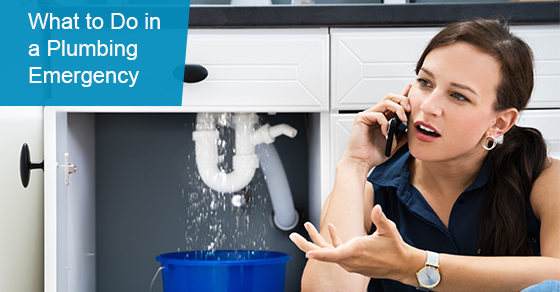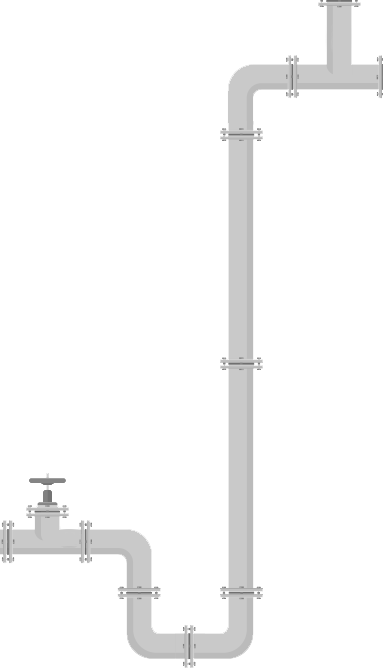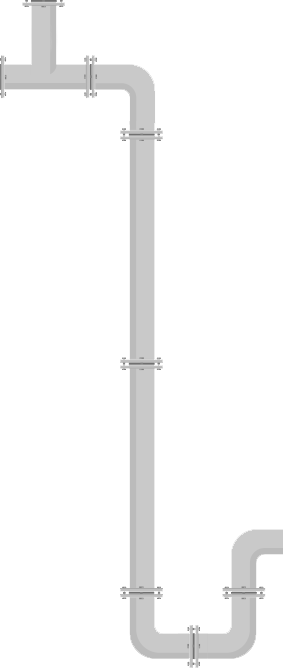What to Do in a Plumbing Emergency
Posted by Jason Genah on 15-03-2021

A burst pipe, overflowing toilet, clogged sink, and perhaps the worst, no water—these plumbing emergencies have one thing in common: they can easily derail anyone’s day and cost thousands of dollars to repair. However, their real threat is not inconvenience: it’s lasting damage.
Many plumbing emergencies result in extensive damage simply due to time. The time it takes between detection and when a plumber arrives to repair it is crucial. Worse, this delay can be prolonged when helpless homeowners panic. The reason? No one knows what to do.
Don’t be caught unprepared in a plumbing emergency. The faster you act to contain the damage and call a 24/7 emergency plumbing service, the sooner it is repaired, and costly damage is prevented. Here’s how to keep calm and prevent any plumbing emergency from escalating:
What counts as a plumbing emergency?
There are many types of plumbing damage, but is every single one an emergency? While any plumbing issue needs to be repaired as soon as possible, a particularly pressing one requires calling a 24/7 emergency plumbing service in Toronto. Making this call might prevent costly and dangerous water damage.
So, when do you need to call a plumber in the middle of the night or on a weekend? Does a minor faucet leak count, or only flooding caused by a burst pipe? Call a 24/7 emergency plumber when any of the following disasters strike:
1. Flooding
Did you come home to a flooded basement? That’s not a pleasant surprise. Chances are, it’s due to a massive clog, back-up, burst pipe, or failed sump pump.
Indoor flooding can cause water damage that affects the structural integrity of your home. It’s one of the toughest plumbing emergencies with lasting consequences, so every minute counts in preventing it from worsening. It doesn’t matter what time it happens—call an emergency plumber right away to find the source and repair the damage.
2. Burst or leaking pipes
One of the most common culprits of indoor flooding is a burst or leaking pipe. Don’t wait for worse damage, and call an emergency plumber right away. While waiting for them to arrive, you can shut off the water supply via the main valve to reduce the flow of water caused by the faulty pipe joint, and prevent more harm. No matter when it happens, an emergency plumber will be able to locate the damaged pipes, and repair or replace them to prevent further plumbing problems.
3. Frozen pipes
Toronto residents are no strangers to sub-zero winter temperatures. Just when you think you’re safe from the cold while indoors, though, think again. The harsh cold affects you and your living space more than you know.
Frozen pipes are one of the most common plumbing emergencies in the winter. Pipes freeze as a result of the water flowing through them hitting below-zero temperatures; this is a process often sped up by a lack of winterizing. Now ice, this exerts mounting pressure on the pipe walls, causing them to expand and eventually burst. Additionally, because there is no water running through the pipes, you won’t be able to flush the toilet or wash the dishes.
When this happens, don’t try to thaw the pipes yourself. Many DIY attempts only result in further damage. Instead, call a plumber at the first sign of frozen pipes, which is often having no running water.
4. Overflowing toilet
Clog a toilet too many times and it will likely overflow. Eventually, an overflowing toilet can flood, which doesn’t just cause water damage, but is highly unsafe and unsanitary. Don’t wait for that to happen, so call a 24/7 emergency plumbing service right away to unclog and repair an overflowing toilet. In the meantime, make sure to shut off the water supply to the toilet, and avoid flushing until it is repaired.
5. Clogged drains
The drains work 24/7 to flush waste out of your home, but over time, they’re no match for waste items that don’t belong there. Rather than flow into the sewer lines, pesky waste products like grease, food scraps, paper towels, sanitary products, and grime can build up in the drains and block the flow of wastewater. Eventually, these clogs can worsen and prevent drainage, resulting in standing or pooling water.
Book an emergency plumbing service when water doesn’t drain, or backs up and fills your sink. Don’t wait for the clog to worsen and cause indoor flooding.
Emergency Plumbing Basics
Now that you know what a real plumbing emergency looks like, it’s also important to remember some basic tips to follow while waiting for your plumber. Following these basics helps minimize damage to your property, and even cut down the repair time. Just remember, though, these tips aren’t DIY hacks—you certainly still need to book a 24/7 emergency plumbing service:
1. Shut off the water supply: As a homeowner, it pays to know where the main shut-off valve is located. It’s helpful to turn it off during a major plumbing emergency like flooding to reduce the flow of water.
2. Turn off the water heater: First, know what type of water heater you use. If it’s gas, turn off the gas first. Turn off the heater only after shutting off the main valve. This prevents overheating or even an explosion due to heat build-up.
3. Open drains and spigots: Even after shutting off the main water valve, there is a good chance that there is still water in the pipes. Where possible, direct this water to flow away from your home by turning on outdoor spigots.
4. Tackle small leaks: It’s best to leave frozen or burst pipes to an emergency plumbing service, but you can certainly apply temporary fixes to minor leaks that you can easily locate. Start by stuffing towels or rags around the affected pipe joints, or put buckets under the drip to reduce water damage to furniture and the building structure. Point your plumber to these leaks as soon as they arrive for immediate repair.
To learn more about the toughest plumbing emergencies and what you can do to prevent further damage, call Drain King Plumbers’ 24/7 emergency plumbing service in Toronto at 833-983-5663, or contact us here.




